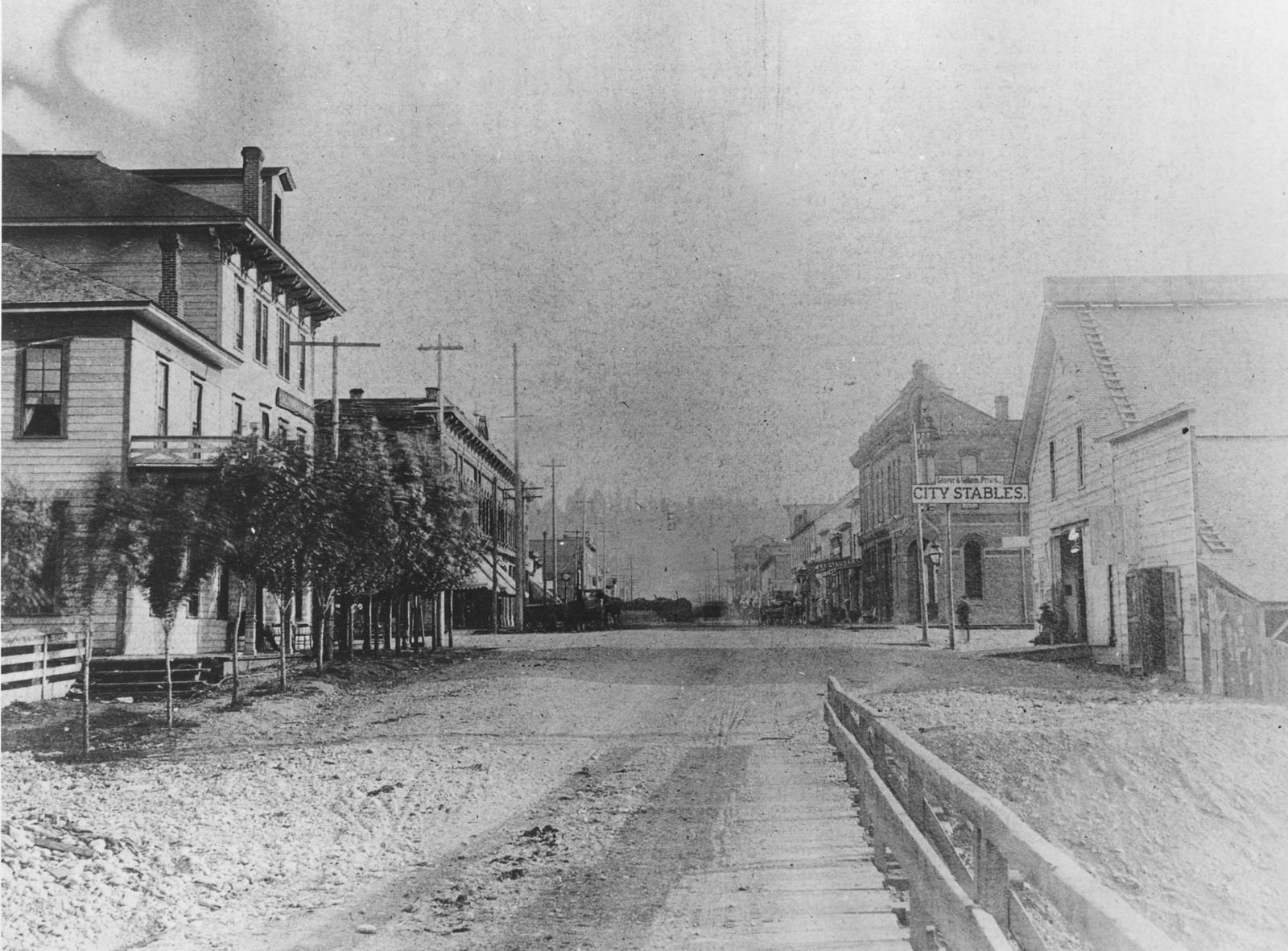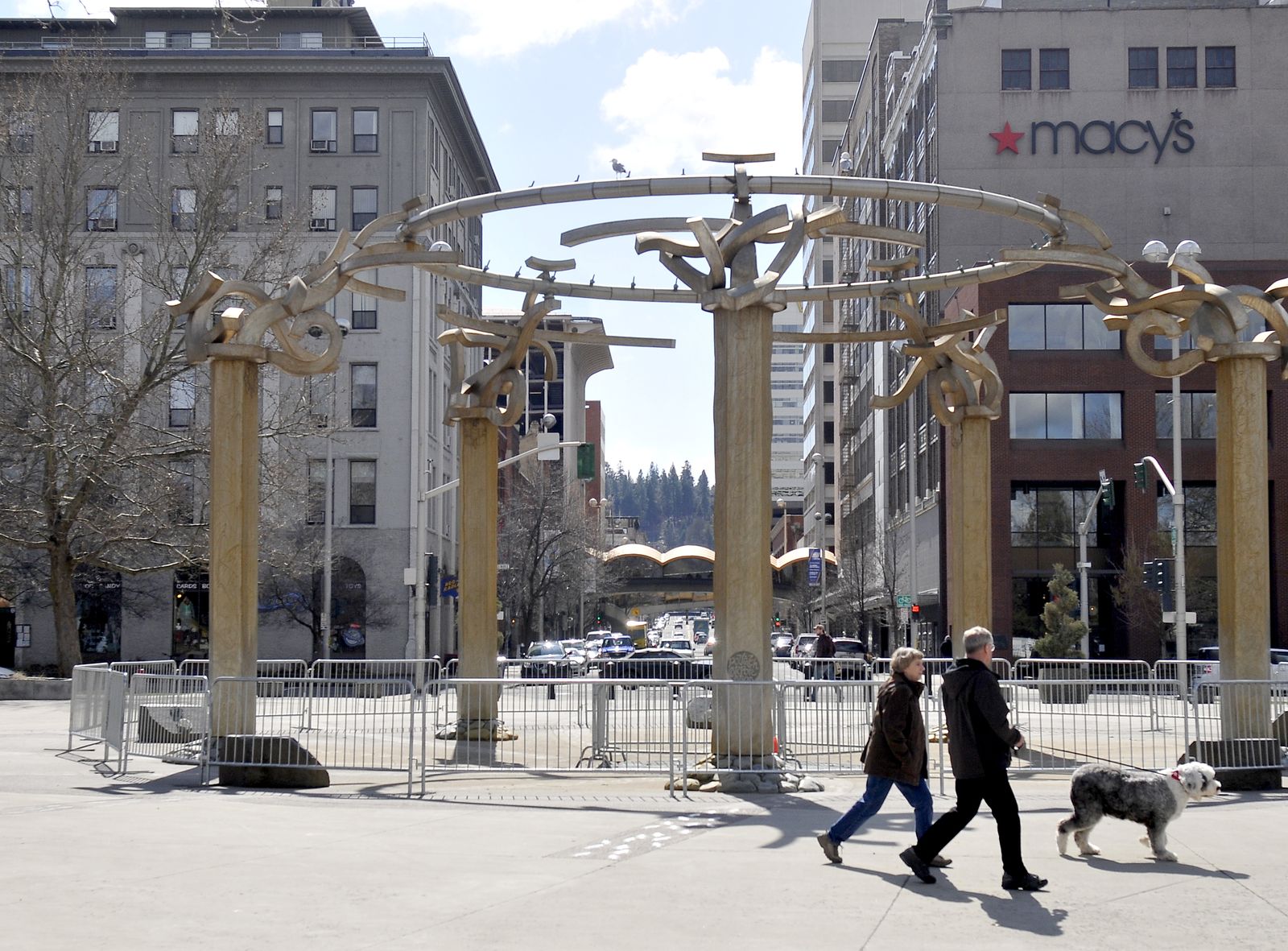
Howard Street
The corner of Howard St. and Spokane Falls Blvd. was the where Spokane’s story began. Original settlers James Downing and Seth Scranton drove the first surveyor’s stake there in 1871. It was where city founder James Nettle Glover built his store and livery stables, seen at right in the photo above, in 1877.
Section:Then & Now
Image One
Photo Archive
| The Spokesman-Review
Image Two
Jesse Tinsley
| The Spokesman-Review
The corner of Howard St. and Spokane Falls Blvd. was the where Spokane’s story began. Original settlers James Downing and Seth Scranton drove the first surveyor’s stake there in 1871. It was where city founder James Nettle Glover built his store and livery stables, seen at right in the photo above, in 1877. A year later, William and Clara Gray, from California, built the California House hotel just to the east of Glover, providing much needed hotel space for travelers, workers and settlers. California House opened with a festive and formal part on Thanksgiving Day, 1878. A large open room upstairs was dubbed “the corral”, where single men could bunk on bear and buffalo hides on the floor for fifty cents when all other rooms were filled. For several years, the California House was where visitors to Spokane spent their first night, including Rev. Joseph M. Cataldo, S.J., the founder of Gonzaga University. Clara Gray is remembered as a gracious and elegant hostess, presiding over the social hub of the downtown area. When miners struck gold in Murray, Idaho in 1883, Spokane was mobbed by would-be gold miners and California House was full for months. Gold fever died down, however, and prices went back to normal: full-time room and board for about six dollars a week. Travelers could get a room for about $1.50 a night. The great Spokane fire, in August of 1889, claimed the hotel and many other buildings in downtown Spokane. Writer Bob Emahiser wrote a history of the hotel in a 1964 Spokane Chronicle: “The dining room (of the hotel) was a civic and social club. Gray administered judiciously as host to Indians and badmen, as well as military officials, railroad executives, mining men and others and boasted there was never a gunfight in the place. He didn’t believe in guns.”

